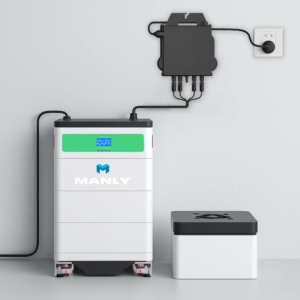Gas vs Electric Golf Cart - What to Choose in 2024
Table of Contents
- Gas vs Electric Golf Cart - What to Choose in 2024
- What are the Benefits of Electric Golf Carts?
- What are the Drawbacks of Electric Golf Carts?
- What are the Benefits of Gas Golf Carts?
- What are the Drawbacks of Gas Golf Carts
- Gas vs Electric Golf Cart – Price Comparison
- Gas vs. Electric Golf Cart - Maintenance Considerations
- Lifespan of Gas vs Electric Golf Carts
- What is the Best Battery for Electric and Gas Golf Carts
- Should You Consider Buying Lithium Batteries for Golf Carts?
- Best Battery Supplier for Golf Carts
- Final Words
- Learn More About Battery
What are the Benefits of Electric Golf Carts?
1. Lower operating costs since electricity is cheaper than gas
Charging an electric golf cart battery cost just a fraction of refueling a gas cart. Electricity prices average 10-15 cents per kWh, while gas averages $3-$4 per gallon. Exact savings depend on local energy and gas pricing of course. But plenty of golf cart owners save upwards of $1000 per year on fuel or charging costs. Maintenance savings also add up with electric models over time.2. Minimal Maintenance for Electric Carts
Aside from periodic battery maintenance, electric golf carts really don’t require much regular servicing. You'll want to check battery acid levels, connective cables, dirt build up on terminals, and other aspects about once a month. But there's no oil changing, air filter replacement, tune-ups, and related maintenance required as with gas vehicles. Electric motors have far fewer parts prone to wear and tear by their very nature.3. Eco-Friendly and Emission-Free Electric Carts
Electric engines produce absolutely zero direct emissions since they don’t involve any internal combustion or burning of fuels. That means no greenhouse gases, particulates, carbon monoxide or other pollutants that gas-powered vehicles inevitably create. While power plants emit some emissions when producing electricity, electric cars keep those pollutants away from population centers. For golf cart owners concerned about the environment, this impact-free operation holds widespread appeal.4. Very quiet operation
Electric golf cart motors produce very little audible noise—especially at low to moderate speeds. Without combustive engines revving loudly under the hood, electric carts allow for relaxed conversation without shouting while driving. This also keeps clubhouses, nearby homes and other areas surrounding the course quieter. Many senior communities and resorts limit or prohibit gas cart usage partially due to noise pollution concerns.5. Smooth acceleration and handling
The instant torque created by electric motors provides responsive acceleration from a full stop. Step on the pedal and smooth, seamless speed-up follows. Electric powertrains also distribute weight more evenly for balanced cornering and nimble handling. Gas-powered carts feel noticeably rougher in their acceleration and turning tendencies by comparison. Better stability and fewer situations with loss of traction give electrics an on-course handling advantage.6. Convenient Home Charging for Electric Golf Carts
Recharging an electric golf cart works similarly to plugging in any household item or mobile device—just on a larger scale. Simply connect the charging cable to your cart and let the electrons flow into the battery pack overnight. For full recharges twice a week or less frequent use, a 120-volt outlet works fine. High-usage owners may prefer faster 240-volt charging though. Just be sure your electrical panel and circuits can support the added wattage load.7. Indoor storage and charging possible
Most electric golf carts lack any combustion components that require proper ventilation, so they can be parked and recharged in enclosed garages or storage buildings safely. No need to have them taking up space outdoors or worrying about rain, sun exposure, leaves, and other elements prematurely aging the carts when not in use. It also makes early morning or late evening charging convenient any day of the year regardless of darkness or bad weather.
What are the Drawbacks of Electric Golf Carts?
1. Limited driving range per charge, usually 25-50 miles
Compared to a gas cart’s 50-100 mile range on a full tank, an electric cart’s finite battery capacity limits excursions to about 25-50 miles prior to recharging. Exact range depends on battery specs, power settings used and driving terrain. Lead-acid batteries on entry-level electric golf carts sit at the low end around 20-30 miles while premium lithium-ion setups achieve 50+ miles range per charge. Regardless of battery quality, keeping charging opportunities available is essential for longer trips.2. Batteries must be replaced every 2-6 years
Whether using traditional lead-acid or more advanced lithium golf cart battery packs, replacements are inevitable every few years. Average golf cart lead-acid batteries last 2-3 years while lithium-ion may push 4-6 years of useful life on average. Battery range and charging ability gradually taper off over time regardless. Budget several hundred dollars for replacements to keep your electric golf cart performing reliably long-term.3. Long battery charging time of up to 8 hours
Fully recharging an electric golf cart battery from empty requires 4-8 hours on typical systems—essentially an overnight process. Rapid charging can speed things up considerably to 1-2 hours, but costs more upfront. Plan your charging schedule wisely around anticipated usage periods. Letting the battery drain extremely low also shortens its total lifespan marginally. Using opportunity charges when time allows keeps things topped off.4. Decreased Power in Low Battery Situations
Much like your smartphone losing juice by evening, an electric golf cart’s remaining charge level directly impacts speed capability. As the battery drains, maximum speeds drop incrementally along with slower acceleration response. With just 20-30% charge left, performance may drag to half its peak capacity or less. That’s why monitoring charge level indicators is important to avoid getting stranded at distant points on course routes.5. Lower Towing Capacity in Electric Golf Carts
The greater raw torque and horsepower of gas engines lends gas golf cart models much greater trailering capacities. Electric golf carts top out around 1200-1500 pounds tow rating typically sufficient for one or two bags per person, a cooler and small supplies essentially. Gas-powered golf carts handle up to 2000 pounds or more, allowing for trailers carrying multiple passengers and gear. Load-carrying limits see similar disparities if passengers weigh over 200-300 pounds total. Performance drops off markedly with heavier electrical loads.What are the Benefits of Gas Golf Carts?
1. Long driving range, over 50 miles on one tank of gas
Thanks to a full 4-6 gallon fuel tank paired with compact but mighty single-cylinder engines, gas-powered golf cart range reaches from 50 miles on up past 100 miles per fill up. Considering an average 18-hole course rings up just 10-15 miles total including errands between holes, that’s plenty capacity to drive multiple rounds or handle longer travel distances comfortably. Diesel-powered golf cart models now available in certain markets provide even greater range thanks to diesel’s improved fuel economy.2. No charging downtime between uses
Pull up to a gas station or fleet refueling pump and fill ‘er up to keep a gas golf cart ready for action anytime. There’s no waiting around hours for batteries to recharge before driving off again. Just pay at the pump and take off whenever needed. Faster fill ups also enable renting a gas-powered golf cart for a few hours without range concerns derailing the day’s plans unexpectedly.3. Consistent Power Delivery in Gas Golf Carts
While electric golf cart performance fades as batteries deplete, gas models deliver consistent muscle whenever you floor it thanks to direct energy ignition. Full speed ahead and ample towing power hold steady tank after tank until the low fuel light eventually clicks on far down the road. Performance stays reliable regardless of hours passed or miles driven since the fuel keeps flowing consistently.4. Enhanced Towing and Load Capacity of Gas Carts
The robust nature of compact internal combustion engines contained in most gas-powered golf carts enables impressive, specified tow ratings of 1500 pounds and way more. That muscular torque pulls additional passenger trailers, club storage bags and cooler gear without noticeable strain. Heavier golfers also find gas models handle their weight aboard better. And since overall load capacities approach 1500 pounds, far more gear travels along comfortably.5. Fast refueling taking only a few minutes
Given their larger 4-6 gallon tank capacities and high flow pump nozzles, gas golf carts refill start to finish in just 5-8 minutes at most. Even nearly empty tanks requiring a couple gallons of fuel feed quickly from gas station grade pumps. Carrying around some reserve fuel jugs can also provide emergency pit stops. Telescoping funnel spouts make pouring from cans simple. That speedy pit stop pace minimizes downtime disruptions.What are the Drawbacks of Gas Golf Carts
1. Higher routine maintenance like oil changes
The engine oil, filters, spark plugs and related components in gas golf cart motors require ongoing service and replacement which electric powertrains don’t. While intervals stretch as wide as 100 run hours between some maintenance tasks, following the maintenance schedule is vital to longevity. Expect 30-50 hours between oil changes with air filter and other inspections every 100-200 hours or annually.2. Emissions contribute to air pollution
Any internal combustion engine inherently emits greenhouse gases, carbon monoxide, nitrous oxides and particulates that electric models don’t thanks to clean operation. While gas golf cart emissions represent just a tiny fraction compared to full-sized vehicle pollution impacts, they still negatively impact air quality and the surrounding environment to some degree through exhaust and evaporative emissions.3. Noisier operation
The firing pistons, turning crankshafts and muffled exhaust noises from small gas engines under the seats result in audible operation that electric powertrains don’t match. Gas golf cart models require some engine noise by regulatory necessity also as safety warnings to nearby pedestrians since electric operation is so quiet by comparison. While models with better sound insulation and mufflers minimize the noise reasonably well, loud exhaust notes still permeate at times.4. Must be stored and fueled outdoors only
Given the open-flame ignition components, exhaust systems and venting fuel systems onboard, parking gas-powered golf carts indoors presents real fire risks without proper ventilation safeguards. Likewise, refueling must only take place at outdoor pumps with vapor recovery systems or using portable gas canisters approved for outdoor use only. Keeping gas fuels separate from interior spaces prevents tragic explosions.5. Higher vibration and rougher ride quality
While automotive-grade shock absorbers and cushioned seating help dampen impacts, the vibrating, combustion-driven powertrain in a gas golf cart transmits more road feedback through the chassis than electric models. The ride experience subsequently feels rougher and bumpier on gravel paths and over curbs and holes. Gas engines also exhibit some front/rear rocking at stoplights absent on electrics.Gas vs Electric Golf Cart – Price Comparison
When comparing golf car prices, electric carts start around $2,500 for basic lead-acid battery equipped models while gas-powered carts start around $5,000 typically for recognizable name brands. However, those entry-level electric carts have batteries needing replacement every few years. Upgrading to better lithium-ion batteries adds $1,000 or more to the price. Evaluated over a 10 year ownership lifespan with battery replacements factored in, electric and gas cart total costs even out closer than purchase prices suggest initially.Gas vs. Electric Golf Cart - Maintenance Considerations
When weighing gas versus electric golf cart ownership, the required maintenance between these two powertrain technologies differs considerably. Electric golf carts operate almost maintenance-free except for periodic battery attention. Meanwhile, gas-powered golf carts involve more intensive upkeep managing fluids, filters and ignition components.Electric cart maintenance basically just entails recharging batteries regularly, adding distilled water to flooded lead acid battery cells every month or two, and occasional terminal cleaning if corrosion buildup occurs. With advanced lithium batteries, even those minimal fluid top-offs disappear. You’ll still want to wipe down battery connections outside the casing every so often to ensure optimum electrical flow and charging capacity. Otherwise, electric golf cart motors spin reliably for years with little human attention needed.However, gas-powered golf cart maintenance schedules stay reasonably busy across the operating season tracking run time hours. Oil and filter changes come due every 50 hours normally, fuel filters and spark plug around 100-200 hours, valve adjustments at 400 hours and occasional engine tune-ups to keep things running optimally. Air filters and brake pad wear enter the inspection routine as well.Neglected maintenance intervals invite premature breakdowns or expensive repairs down the road on gas models. But conscientiously following factory recommendations pays big dividends towards stretching gas golf cart operation reliably over thousands of hours and miles accumulating fun memories across a decade-plus potentially.Lifespan of Gas vs Electric Golf Carts
The average lifespan of electric and gas-powered golf cart models varies primarily based on adequacy of maintenance for gas cart engines, and battery replacement frequency on electrics. But generally, today’s golf carts last between 10-20 years before retirement regardless of power source assuming proper upkeep.Electric golf cart lifespans average 10-15 years assuming periodic mid-life battery replacements every 4-6 years to maintain rated range and charging capacity up to roughly 20,000 operational hours. With factory components and prudent maintenance, certain Club Car, Yamaha and similar premium electric golf carts log over 20 years reliably. Lower-cost models may decline sooner from heavy use and cut corners though.Comparatively, gas-powered golf cart longevity depends more widely on diligence following scheduled maintenance examining valves, brakes and related components along with operating conditions seen. But with proper engine and transmission fluid changes applied timely per factory intervals, top Club Car, Yamaha and EZ-GO gasoline golf cart models also log 15-20 years of useful transport duty around courses and gated communities before metal fatigue, emissions and driveline issues necessitate retirement. Lesser brands may falter years sooner from overlooked upkeep.




















